On a sunny day near Martinez, California, a friendly-looking German shepherd named Zinka rushes down the crisscrossing trails of Briones Regional Park wearing a vest covered in sensors, batteries and wires. She’s followed by her trainer, Shay Cook, who keeps up at the end of a long leash.
The duo trains to track people who have passed through an area — hours or even days later. Their search and rescue training allows them to find a single person across backcountry woods, neighborhoods or even a bustling university campus packed full of students. They also search for missing people lost in natural disasters like fires and earthquakes.
But today, they’re in pursuit of something different: clues in a scientific experiment about how odors disperse over time, and how the brain deciphers information about the invisible world of smells that surround us.
Every dog owner knows that dogs are able to pick up scents that don’t seem to catch the attention of people. One study estimated that dogs can pick up odors up to 100,000 times better than humans can.
“It’s a treat to go out and watch a search and rescue dog work a trail and see them find the person at the end,” said Judy Jinn, a graduate student in the lab of Dr. Lucia Jacobs at UC Berkeley. “If you’ve never seen it before, it’s pretty amazing.”
Jinn is wrapping up a study that seeks to shed some light on the surprisingly complex question of how dogs can track a target using tiny amounts of odor that people don’t even notice.
“It actually hasn’t been studied very well in the past,” she said. “But it’s picking up now.”
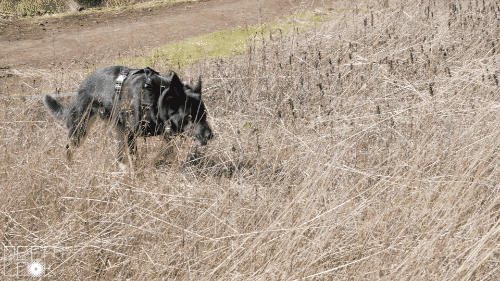
The experiment is part of a collaboration between six universities across the country funded by the National Science Foundation’s Brain Initiative. It’s called the Odor Navigation Project. The collaborators come from disparate fields of study, including animal behavior, genetics, physiology and fluid mechanics, to study how animals use smell to understand their surroundings.
The national project has a far-reaching goal: to help develop more effective devices — perhaps even a new generation of robots that seek specific odors — to detect explosives, drugs and other dangerous chemicals in airports, subways, factories and other locations.
For Jinn’s contribution to the project, she set up an experiment in which a “target hiker” would walk a preset route along crisscrossing trails in the park. Then she used GPS and other sensors attached to the search dog’s harness to record how closely Zinka followed the hiker’s path.
In the experiment, the target hiker would get a one-hour head start — although Zinka can track people even days later. Even rain doesn’t stop her keen sense of smell.
By following the search team with a portable weather station, Jinn found that the dog was able to follow the target hiker’s trail more closely under humid conditions. She said she thinks the humidity might help trap scent particles on the ground and on vegetation instead of letting them be blown away by the wind. Jinn hopes to have her results published this year.
Researchers haven’t fully come to an agreement on exactly what it is that dogs are smelling. Jinn thinks that dogs detect traces of vapors emitted from tiny amounts of dead skin cells, hair and sweat that people shed as they walk.
John Crimaldi, who studies fluid mechanics at the University of Colorado Boulder, is looking at the structure of the odors themselves. He’s the lead principal investigator of the Odor Navigation Project. Crimaldi and his lab use special techniques to study the physics of how odors move around in air and water.
It turns out there are everyday examples of the way invisible odors disperse all around us.
“When you see a plume of smoke coming out of a smokestack or what milk looks like when you pour it into your coffee, it has that very complex structure to it,” Crimaldi said. “They’re actually all using the same physics.”
One of Crimaldi’s studies involves using lasers to measure how a fluorescent dye spreads out in a large tank of water. Researchers use the data of how the dye dissipates unevenly over time to create computer models that replicate the motion of the chemicals swirling around.
Then the researchers run different computer programs that inspect the model for the source of the plume. Crimaldi wants to know which algorithms do a better job of locating the source of the odor within the model.
“Ultimately, we want to build a mechanistic model so that we can actually understand how the brain functions when searching for an odor source,” he said. “We want to find the optimal strategies that you might use to program a robot to do similar tasks like search and rescue.”
While Crimaldi looks at the structure of smells, other labs participating in the Odor Navigation Project are focused on the tools animals use to detect odors by “reverse engineering a dog’s nose.”
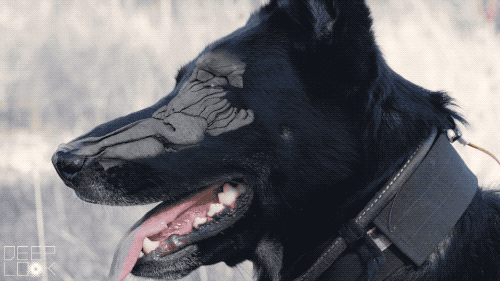
While working at Penn State University, Brent Craven and his colleagues looked at the anatomy of a dog’s nose, and how air moves through it.
Craven and his colleagues use scanning technologies like MRI to peer inside the skulls of different mammals. They’ve found that many of the animals that are considered to have a strong sense of smell, like dogs, tend to have a similar structure in the back of their noses.
“It’s called an olfactory recess,” Craven said. “It’s in a dead-end region like a cul-de-sac at the back of the nose. That’s where the sensors are located.”
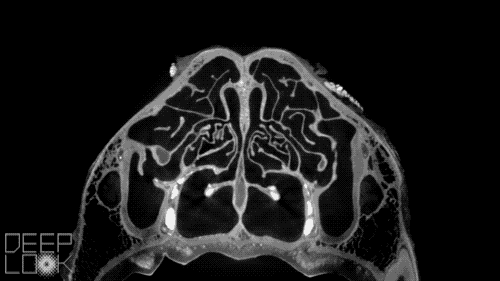
It’s full of delicate bones, known as turbinates, that are covered in mucus membranes. The bones twist and coil like a maze inside the dog’s skull. The turbinates are covered with sensory cells called olfactory neurons that feed information to the brain.
Dogs have about 600,00 olfactory neurons. That’s 15 times what humans have.
Humans have olfactory neurons in a little patch at the top of the inside of their noses. Since there’s no special structure to house them, the air that people smell mixes with the rest of the air we breathe. Since all of our sensors are in the same area, they can get bombarded by smells, making it harder to distinguish individual odors.
But according to Craven, dogs aren’t unique when it comes to their keen sense of smell.
Based on the structures the scientists found in the MRI scans, many animals have a sense of smell comparable to dogs.
“They all have this similar olfactory recess,” Craven said. “Humans, and some other primates basically, are the ones that aren’t as good.”
The Penn State University researchers used data from the scans to create a computer model that mimics the anatomy of the dog’s nose, inside and out.
They ran tests on the computer model to see how air moved through the delicate structures to find clues that could lead to new designs for trace chemical detectors.
One advantage that dogs have over people is the shape of their nostrils. It has to do with those slits running along the sides of their nostrils.
Matthew Staymates is a mechanical engineer at the National Institute of Standards and Technology, a federal government lab in Gaithersburg, Maryland. He studies ways to improve detectors for explosives, drugs and toxic industrial chemicals. And to do that, Staymates is interested in how the shape of dog nostrils helps them detect smells so accurately.
Staymates, whose work is funded separately from the Odor Navigation Project, took the computer model of a dog’s nose developed at Penn State and printed it out using a 3-D printer to create an anatomically correct artificial dog nose, complete with the turbinates and olfactory recess.
He fit the model nose with an air hose that mimics a dog’s natural sniffing speed. Dogs sniff in and out about five times per second.
“It sniffs like a real dog,” Staymates said.
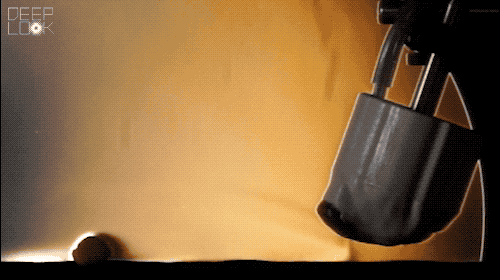
By viewing the nose using a specialized filming technique called Schlieren imaging, Staymates was able to see how the shape of dog nostrils allows them to inhale from the front and then shunt the exhaled air out and back. That creates a momentary low-pressure area in front of the dog’s nose.
Even though the artificial nose is inhaling and exhaling the same volume, air rushes in from the front to fill that area of low pressure. That allows dogs to get a fresh sample from the area in front of them with each sniff.
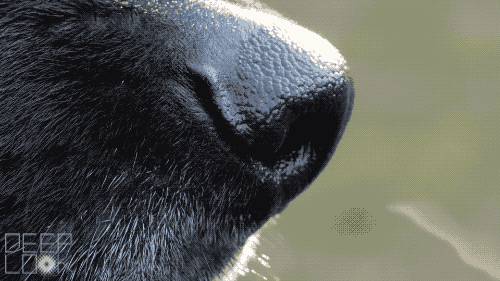
By mimicking the shape of the nostrils, Staymates proposes that new detectors could not only sample the area directly adjacent to the devices, but could also pull in air from farther away, allowing them to extend their reach.
“Most of the current generation of detectors for drugs, or chemical and biological threats, basically just suck air through a hole and analyze it,” Staymates said. “But dogs have an active sampling system that interacts with its environment in a really unique way, a very sophisticated way.”
Check out more in this PBS NewsHour Video